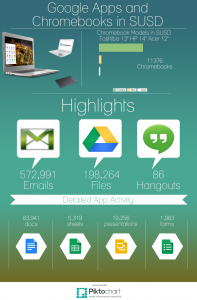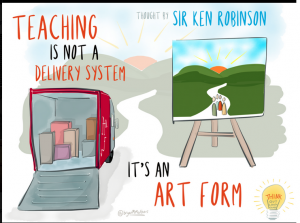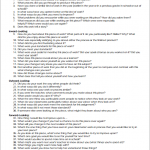“The difference between death and taxes is death doesn’t get worse every time Congress meets.”–Will Rogers
I believe I have read and learned more about taxes in the short weeks of this course than I have in my entire life. I will evaluate the California tax system using evaluation criteria discussed in our text and readings. The best taxes for funding education will also be discussed, as taxes are the primary means to fund education and other public services.
Our text includes six characteristics of a good tax system and our reading from the Legislative Analyst Office includes a few others. Public education can be funded through the collection of a variety of taxes including income tax, property tax, sales tax, severance tax, lottery tax, and sumptuary tax. Some pros and cons of these potential funding sources will be discussed as the system of funding California schools is evaluated (Brimley, Verstegen, and Garfield 2013).
The six characteristics of a good tax system according to our Brimley textbook includes; fairness and equity, adequacy of yield, cost of collection, impact/incidence, neutrality, and predictability (Brimley et al., 2013).
- Fairness and Equity: a tax is considered fair and equitable if there progressive characteristic and those who make more, pay a higher percentage than those that make less. Our US income tax system would be an example of a progressive tax.
- Adequacy of Yield: government needs to guard against antagonizing the taxpayer and should ensure that taxes are applied to sustainable and stable sources of income while avoiding nuisance taxes that yield very little, but annoy the citizens.
- Low Cost of Collection: Taxes should be simple for the taxpayer to pay and should be easy for government to collect. Administrative and collections costs should be low or the collected monies are eroded by the management costs of the program
- Impact or Incidence: Targeted taxes that cannot be shifted to another for payment. A concern for corporate taxes is that the cost of the tax will simply be passed onto the consumer. Another example of the impact tax is on new home construction where new owners must pay a tax to build a future school or park in the development.
- Neutrality: Taxes are collected to move monies from the private to the public sector but a neutral effect is desired. Governments must guard against taxes being too high and preventing consumers from buying desired goods and services.
- Predictability: Taxes should be attached to reliable and sustainable sources so that governments can predict expected revenue streams from year to year and avoid severe swings and shortfalls
Milk the cow, but do not pull off the udder.
Greek proverb
In Understanding California’s Property Taxes, the Legislative Analyst Office (LAO) includes some similar characteristics for evaluating the strengths and weaknesses of the property tax system. Per the LAO, the common economic criteria for evaluating tax systems are growth, stability, simplicity, neutrality, and equity (LAO.ca.gov, 2012). Each will be discussed briefly below.
- Growth: will the tax allow for funding the program and grow as the economy/needs for services grows.
- Stability: will the revenue stream remain stable over time? This characteristic is similar to predictability from the Brimley list.
- Simplicity: this relates to low cost of collection from Brimley. Revenue should not be eaten up with high cost of collection or administration and should be easy for the taxpayer to pay.
- Neutrality: again, same as Brimley in that taxes should not negatively impact consumer spending on desired goods and services
- Equity: includes both vertical and horizontal equity. Vertical equity includes the progressive nature of the tax that was discussed above. The more you make, the more you pay. Horizontal equity implies that people that make similar amounts of money or own homes of similar values pay similar amounts of taxes.
What are called ‘public schools’ in many of America’s wealthy communities aren’t really ‘public’ at all. In effect, they’re private schools, whose tuition is hidden away in the purchase price of upscale homes there, and in the corresponding property taxes.
Robert Reich
Property taxes have been the primary source of funding for California’s schools which served as an adequate system for many years. Over the years, many lawsuits and court decisions have agreed that funding schools is the responsibility of the state. For California, this was accomplished by Props 13 and 98. Currently, 40% of educational funding is covered by the state of California (Ballotpedia.com, 1988). Some alternate forms of taxation will be discussed as to the viability of using these sources to fund education.
Property taxes are not the best way to fund schools. While there is equity in the system in that homeowners who own homes of comparable value, pay at similar rates and that those who own more expensive homes, pay at a greater rate based on ability to pay, property taxes do not provide a stabile and predictable funding source for schools as we saw with the housing market bust of 2008. Property taxes impact property owners, but not renters, which is a source of contention in Stockton. Many of our parents rent property, but are allowed to vote on tax increases.
Sales tax is another tax that is frequently kicked around as being a fair tax since all have to pay it. However, sales tax can be one of the most regressive taxes, especially when applied to products that are necessities. Lower income families are more heavily taxed and harder hit by sales taxes.
Personal income taxes seem to be the highest-ranking tax to be used. Incomes are fairly stable and predictable from year to year. Taxes are actually paid from income, which is another reason that property taxes are a less favorable option. Income tax is progressive and has both horizontal and vertical equity. Currently there are 9 tax brackets in California (FTB.ca.gov, 2015). Taxpayers must work nearly 4 complete months to pay their annual tax responsibilities. In 2015, Tax Freedom Day was April 24th (Tax Foundation, 2015).
The lowest ranking tax is the lottery tax and there is much discussion about whether or not this is actually a tax at all. Like other forms of gambling, Indian casinos, and horse racing, the majority of participants or players come from lower socio economic demographics. As was learned in the last assignment, the lottery only makes up 1-2% of districts budgets. The revenue stream from the lottery is a nice extra or cushion, but cannot be relied upon as a means of funding our schools (CAlottery.com, 2015).
The proposed best tax for funding education and our schools would be a combination of the taxes that have been discussed throughout the blog. I think a combination that included Property, Income, and Sales taxes would be the best situation for school funding. By not relying on any one form of taxation, revenue streams should remain stable and fairly predictable over time and should help avoid massive shortfalls when the housing market tanks, preventing layoffs, furloughs, and suspension of services. I look forward to learning more about LCFF and LCAP this week to see how this new formula will provide a reliable funding stream for our schools.
“The taxpayer: that’s someone who works for the federal government, but doesn’t have to take a civil service examination.”– Ronald Reagan
Ballotpedia.org. (2015). California Proposition 98, Mandatory Education Spending
(1988) – Ballotpedia. Retrieved 23 May 2015, from
http://ballotpedia.org/California_Proposition_98,_Mandatory_Education_Spending_%281988%29
BrainyQuote,. (2015). Taxes Quotes at BrainyQuote. Retrieved 22 May 2015, from
http://www.brainyquote.com/quotes/keywords/taxes.html
Brimley, V., Verstegen, D., & Garfield, R. (2013). Financing education in a climate of
change. Boston, MA: Pearson.
Calottery.com. (2015). See Where The Money Goes. Retrieved 18 May 2015, from
http://www.calottery.com/giving-back/education/where-money-goes
Forbes. About Taxes. Retrieved 24 May 2015, from
http://www.forbes.com/sites/robertwood/2013/09/20/20-inspirational-quotes-about-taxes/
Ftb.ca.gov,. (2015). 2014 California Tax Rates and Exemptions | California Franchise
Tax Board. Retrieved 24 May 2015, from
https://www.ftb.ca.gov/forms/2014_California_Tax_Rates_and_Exemptions.shtml
Lao.ca.gov,. (2015). Understanding California’s Property Taxes . Retrieved 24 May
2015, from http://www.lao.ca.gov/reports/2012/tax/property-tax-primer-112912.aspx
Ppic.org. (2011). Financing California’s Public Schools (PPIC Publication). Retrieved
23 May 2015, from http://www.ppic.org/main/publication_show.asp?i=1001
Tax Foundation,. (2015). Tax Freedom Day® 2015 is April 24th. Retrieved 24 May
2015, from http://taxfoundation.org/article/tax-freedom-day-2015-april-24th







